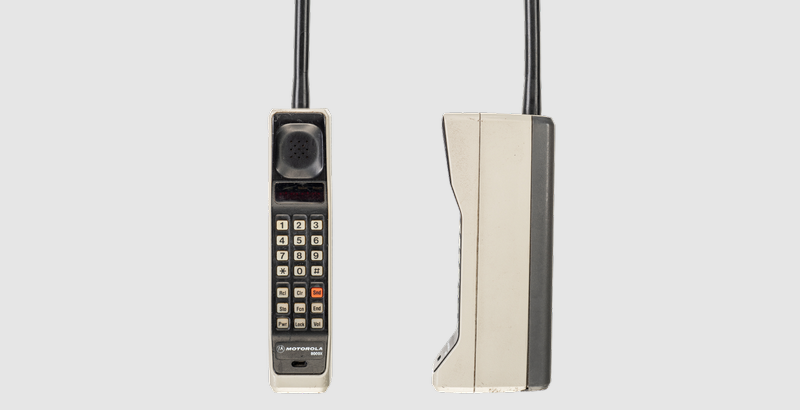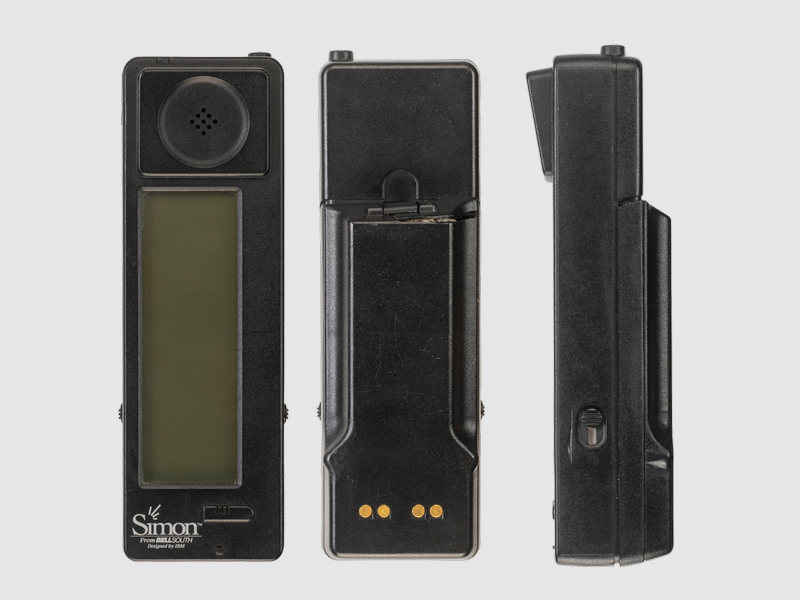Key Takeaways
- The first mobile phone, the Motorola DynaTAC, was released in 1983 for $3,995.
- The first smartphone, the IBM Simon, was announced in 1992, and it had a touchscreen, phone capabilities, and basic applications.
Apple is largely credited with kicking off the smartphone boom in 2007 with the original iPhone. Of course, the iPhone was not the first smartphone—that came many years earlier, and it surprisingly didn’t bear the name of BlackBerry or Nokia. Let’s hop in the Wayback Machine.
The First Mobile Phone
Before we go back to the first smartphone, let’s travel a bit further back to the first mobile phone. The first handheld cell phone was shown off in 1973 by John F. Mitchell and Martin Cooper of Motorola, but the fruits of that labor were not seen until 1983, when the company’s first mobile phone hit the market.
That phone was the Motorola DynaTAC 8000X (abbreviation for “Dynamic Adaptive Total Area Coverage”). It looked like what we now might recognize as a landline phone, but it was indeed a mobile phone. After just a short 10 hours of charging time, you could talk for a whole 30 minutes! The DynaTAC was equipped with an LED display, and it could store up to 30 phone numbers for quick dialing.
All of that fancy technology was not cheap. It cost $3,995 in 1984, the equivalent of a cool $12K nowadays. Motorola followed up the original DynaTAC with several iterations throughout the late 80s and early 90s. The phones got far more mobile, culminating with the StarTAC in 1996, but they were never smart.
The First Smartphone
The first smartphone was invented in 1992 by IBM—it was called the Simon Personal Communicator. The term “smartphone” didn’t even exist yet, and the device wouldn’t be available to purchase for two more years. But the IBM Simon had many of the features that we’ve come to expect from smartphones.
First and foremost, it had a touchscreen. It was a 4.5 x 1.4 inch monochrome LCD touchscreen that required a stylus, but a touchscreen nonetheless. The Simon could make phone calls, send and receive emails and faxes, and it had a handful of applications. Those apps included some classics, such as an address book, calculator, calendar, world clock, and notepad.
Bad battery life has also been a core feature of the smartphone experience since the start. The IBM Simon lasted only one hour on a charge. Powering the device was a 16MHz CPU and 1MB of RAM. It was 1.5 inches thick and weighed over one pound.
At the time, the Simon fell under the PDA category (personal digital assistant, but not that kind). However, PDAs rarely were actual phones with cellular connectivity, which is why it’s retroactively been put under the smartphone umbrella. All that cutting-edge tech cost consumers $900 ($1.8K now) with a two-year contract with BellSouth Cellular or $1,100 ($2.3K now) outright.
Smartphones have come a long way since the 90s, but new technology always has to start somewhere. 10-20 years from now, people may look back at our smartphones and foldable devices as very rudimentary devices. But it will still all be thanks to the Motorola DynaTAC, IBM Simon, and countless other devices that changed the world.
source

